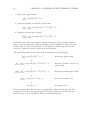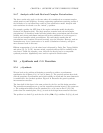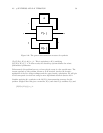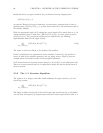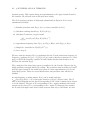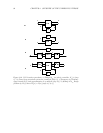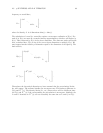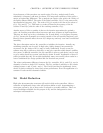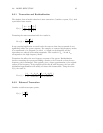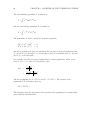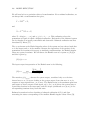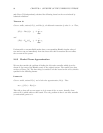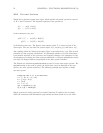64 CHAPTER 2. OVERVIEW OF THE UNDERLYING THEORY
Several aspects of this procedure are worth noting. For the µ analysis and D scale
calculation, a frequency grid must be chosen. The range and resolution of this grid is a
matter of engineering judgement. The µ analysis can require a fine grid in the vicinity of
the lightly damped modes. The order of the initial controller, K
0
(s), is the same as the
interconnection structure, G(s). The order of K(s) is equal to the sum of the orders of
G(s),
ˆ
D(s)and
ˆ
D
−1
(s). This leads to a trade-off between the accuracy of the fit
between D and
ˆ
D(s) and the order of the resulting controller, K(s).
Another aspect of this to consider is that as the iteration approaches the optimal µ
value, the resulting controllers often have more and more response at high frequencies.
This may not show up in the µ calculation, the D scale fitting, or a frequency response
of K(s), because the dynamics are occuring outside of the user specified frequency grid.
However these dynamics affect the next H
∞
design step and may even lead to numerical
instability.
The above discussion used an H
∞
controller to initialize the iteration. Actually any
stabilizing controller can be used. In high order, lightly damped, interconnection
structures, the H
∞
design of K
0
(s) may be badly conditioned. In such a case the
software may fail to generate a controller, or may give controller which doesn’t stabilize
the system. A different controller (the H
2
controller is often a good choice) can be used
to get a stable closed loop system, and thereby obtain D scales. Application of these D
scales (provided that they do not add significantly many extra states) often results in a
better conditioned H
∞
design problem and the iteration can proceed.
The robust performance difference between the H
∞
controller, K
0
(s), and K(s), can be
dramatic even after a single D-K iteration. The H
∞
problem is sensitive to the relative
scalings between v and w (and z and e). The D scale provides the significantly better
choice of relative scalings for closed loop robust performance. Even the application of a
constant D scale can have dramatic benefits.
2.6 Model Reduction
High order interconnection structures will result in high order controllers. Often a
controller of significantly lower order will perform almost as well. Approximating a
state-space system by one of lower order is referred to as model reduction. There are
several techniques available for this purpose in Xµ and the background to these
techniques is discussed here.



